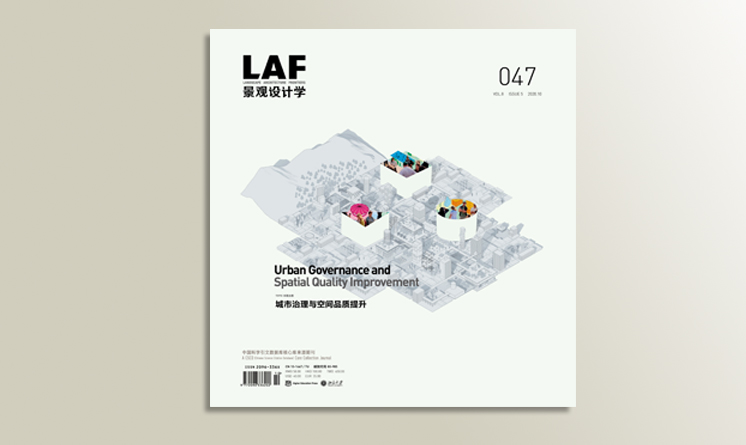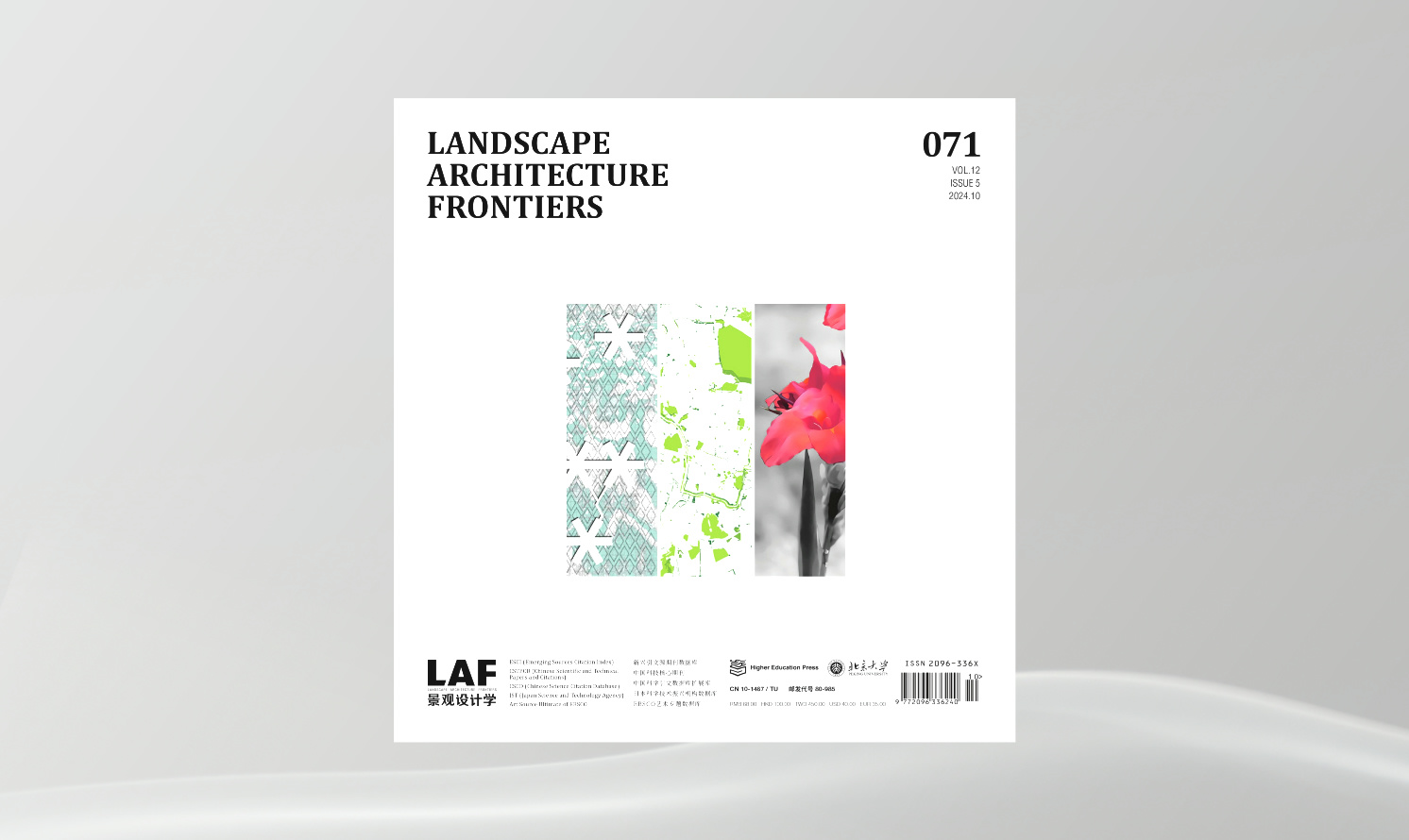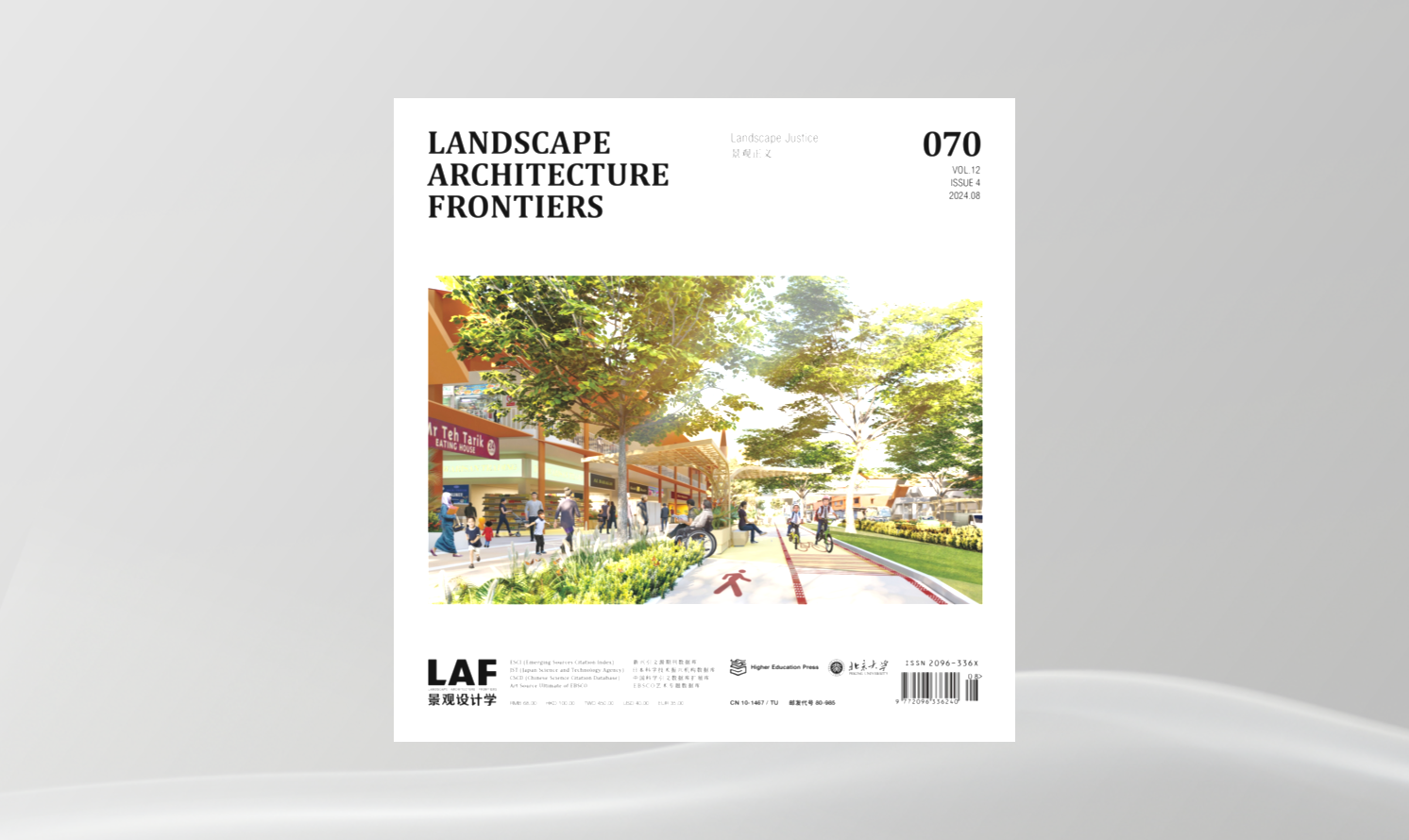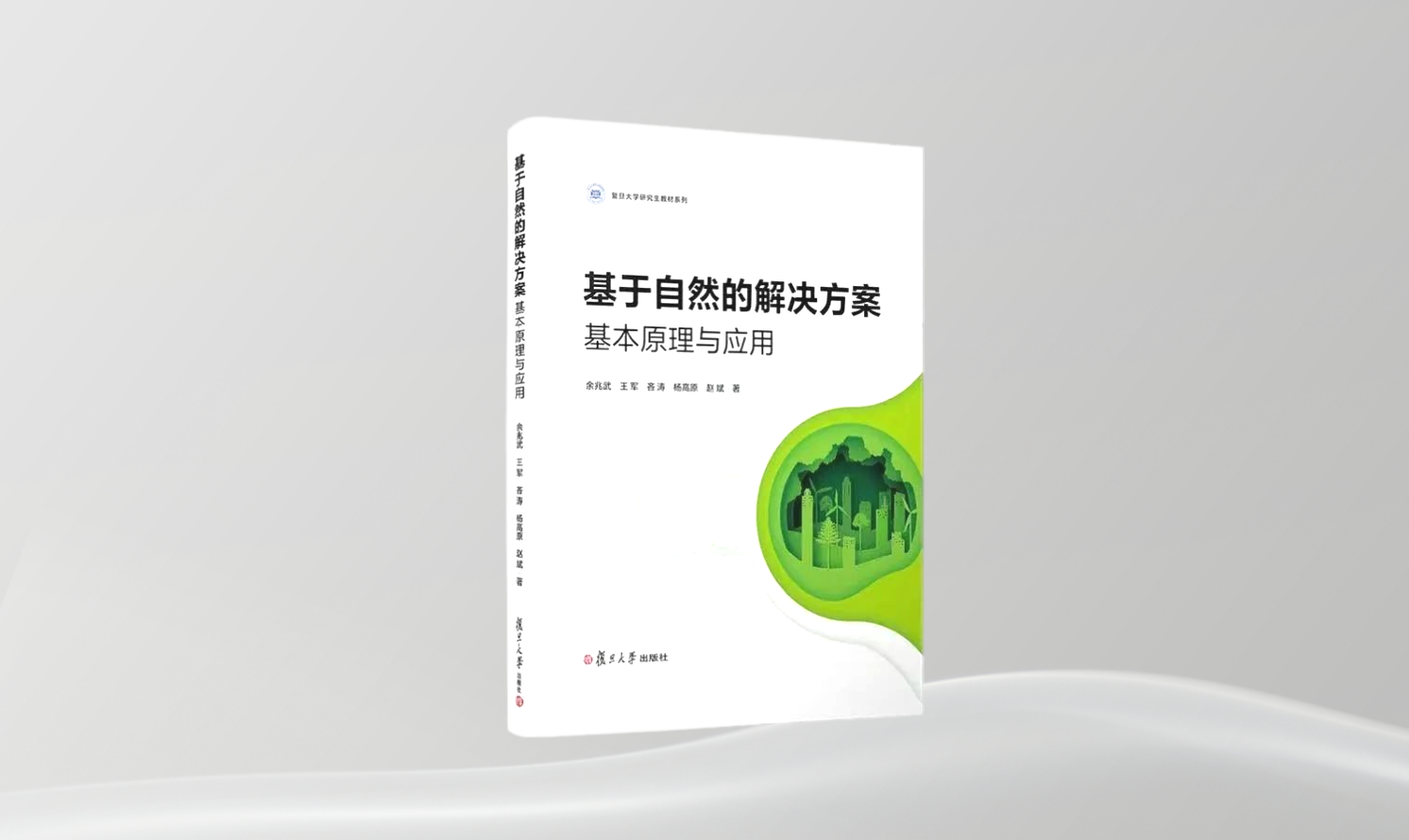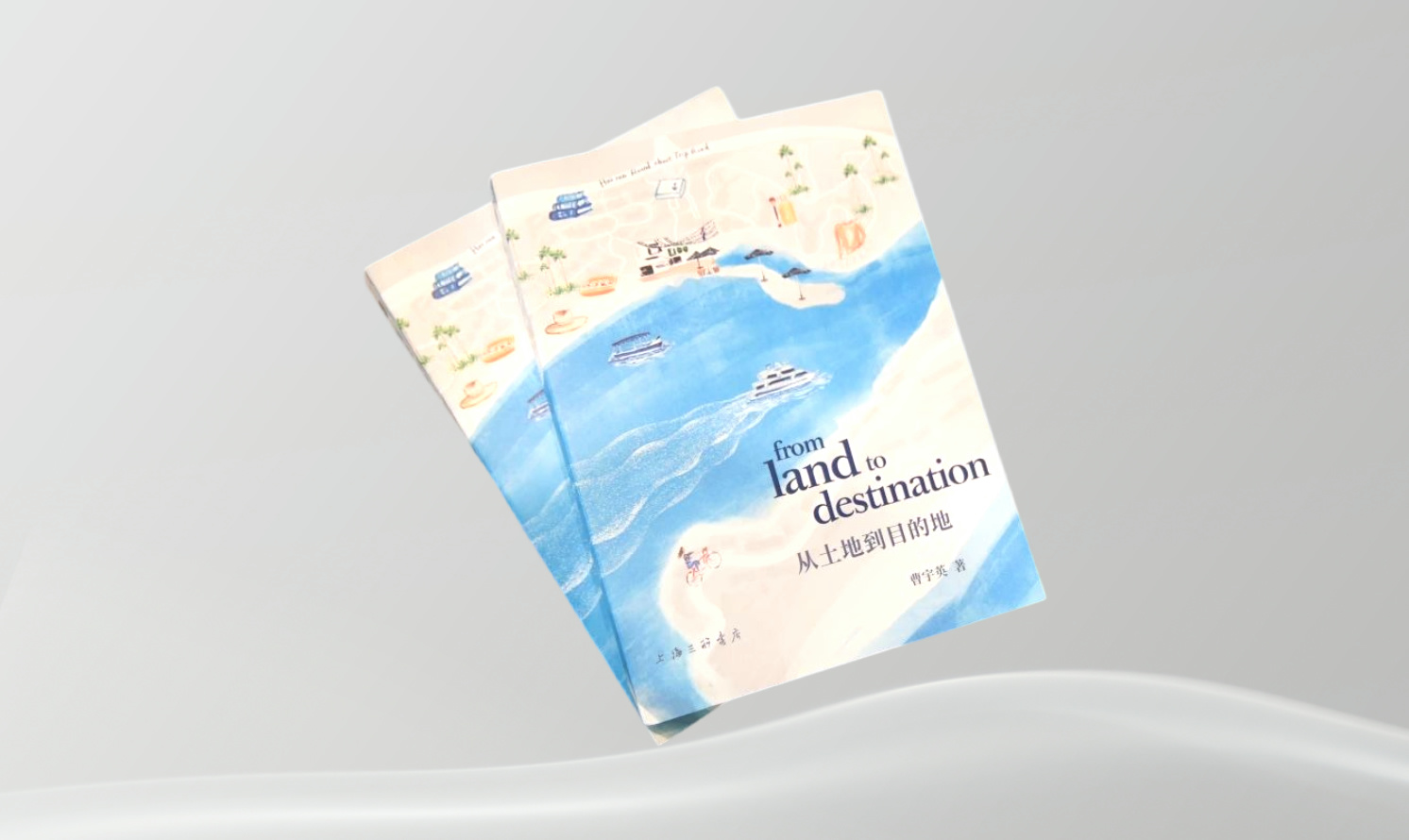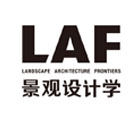桃花源與生存的藝術(shù):我的治愈地球之旅
THE LAND OF PEACH BLOSSOMS AND THE ART OF SURVIVAL: MY JOURNEY TO HEAL THE PLANET
作者:俞孔堅(jiān) YU Kongjian
摘要
10月8日�����,國際景觀學(xué)與風(fēng)景園林師聯(lián)合會(huì)(IFLA)2020年杰弗里?杰里科爵士獎(jiǎng)揭曉�����,北京大學(xué)建筑與景觀設(shè)計(jì)學(xué)院教授俞孔堅(jiān)榮獲該獎(jiǎng)項(xiàng)�����。這是國際景觀學(xué)與風(fēng)景園林界授予具有杰出貢獻(xiàn)的景觀設(shè)計(jì)師和學(xué)者的最高終身成就獎(jiǎng)�����。頒獎(jiǎng)典禮上�����,俞孔堅(jiān)發(fā)表主題演講�����,回顧了自己的學(xué)術(shù)與實(shí)踐生涯�����,本文為此次演講實(shí)錄�����?����;仡欉^去,俞孔堅(jiān)認(rèn)為�����,他的鄉(xiāng)村景觀體驗(yàn)融合了現(xiàn)代的景觀和城市主義概念�����、可持續(xù)性和美學(xué)觀�����,使他有能力應(yīng)對(duì)當(dāng)今行業(yè)所面臨的一些常見挑戰(zhàn)�����。當(dāng)下�����,新冠肺炎疫情在全球肆虐�����,他認(rèn)為�����,這正是值得我們清醒反思人類與賴以生存的自然世界之間關(guān)系的時(shí)刻。但他也相信�����,在疾病的流行及氣候變化等危機(jī)下�����,景觀設(shè)計(jì)的重要性也愈發(fā)凸顯:景觀不僅可以治愈身心�����,還可以治愈地球本身�����。
關(guān)鍵詞
國際景觀學(xué)與風(fēng)景園林聯(lián)合會(huì)�����;杰弗里?杰里科爵士獎(jiǎng)�����;景觀設(shè)計(jì)�����;生態(tài)�����;美學(xué)�����;鄉(xiāng)村�����;氣候變化
Abstract
On October 8, the 2020 Sir Geoffrey Jellicoe Award of the International Federation of Landscape Architects (IFLA) was awarded to Yu Kongjian, professor of School of Architecture and Landscape of Peking University. This highest honor for landscape architects and scholars recognizes their outstanding lifelong achievements. This article is a record of his speech given in the award ceremony that summarized his academic and professional careers. Looking back, Yu held that his village landscape experiences, melded with modern concepts of landscape and urbanism, sustainability and aesthetics, enables him to deal with the common challenges faced by the landscape architecture industry today. At the moment, the global COVID-19 pandemic is a powerful reminder that this is an incredibly sobering time to contemplate the relationship between humans and the nature. He also believed that the pandemic—together with other crises such as climate change—is highlighting the importance of landscape architecture that can not only heal bodies and minds, but also the planet itself.
Keywords
International Federation of Landscape Architects; Sir Geoffrey Jellicoe Award; Landscape Architecture; Ecology; Aesthetics; Village; Climate Change
微觀情境視角下日本社區(qū)營造運(yùn)動(dòng)的全球本土化分析
Glocalization-Based Analysis of Japanese Community Building Movement from a Micro-Context Perspective
作者:周詳�����,成玉寧�����,窪田亞矢 ZHOU Xiang, CHENG Yuning, Aya KUBOTA
摘要
文章首先從詞源學(xué)的角度闡釋了“全球本土化”概念的內(nèi)涵,以及將之作為現(xiàn)實(shí)背景對(duì)社區(qū)營造展開研究的當(dāng)代意義�����。文章指出�����,通過具體的微觀情境來理解全球本土化的概念�����,是社區(qū)營造研究中全面理解本土社會(huì)全球化進(jìn)程最適宜的分析框架�����?����;诖?����,文章從微觀全球化視角出發(fā)�����,以日本的社區(qū)營造為例�����,考察了全球本土化進(jìn)程對(duì)日本社會(huì)產(chǎn)生的影響�����。日本的社區(qū)營造除了具備西方社會(huì)倡導(dǎo)的“公眾參與”所普遍具有的政治學(xué)和社會(huì)學(xué)因素外�����,還強(qiáng)調(diào)從文化的角度來理解日本傳統(tǒng)空間意象的保護(hù)意義�����。文章選取東京神樂坂作為研究案例�����,通過剖析其在社區(qū)營造過程中話語實(shí)踐的創(chuàng)新�����,來探究日本社會(huì)在全球本土化過程中表現(xiàn)出來的復(fù)雜性和驅(qū)動(dòng)力。文章關(guān)注全球化體系中神樂坂的本土化社區(qū)在社會(huì)關(guān)系塑造中的作用�����,并通過解析自下而上的營造與由上至下的規(guī)劃之間產(chǎn)生的矛盾與耦合關(guān)系�����,重點(diǎn)論述日本社區(qū)營造當(dāng)前面臨的機(jī)遇和挑戰(zhàn)�����,從而希望對(duì)中國正在推進(jìn)的社區(qū)營造運(yùn)動(dòng)有所啟示�����。
關(guān)鍵詞
微觀全球化�����;全球本土化�����;社區(qū)營造�����;地域共治�����;文化景觀
Abstract
This paper first explains the etymological connotation of Glocalization and interprets its authenticity and contemporary significance for studying community building. It argues that understanding Glocalization in specific contexts offers an ideal analysis framework to comprehend the globalization processes of local societies. This paper, by adopting a perspective of micro-globalization, studies the community building in Japan to manifest the influence of the process of Glocalization on Japanese societies. In addition to the political and sociological factors prevalent in the public engagement of community building advocated by western countries, Japanese practice is characterized for emphasizing the cultural significance of the traditional Japanese spatial image. Taking the community building case in Kagurazaka of Tokyo, it illustrates the creative discourse practice in the local community building to probe into the complexity and driving forces in Japan’s Glocalization. In addition, this paper focuses on the role of the localized community in shaping the social relations in Kagurazaka under globalization. By analyzing the contradictions and associations between the bottom-up building and the top-down planning, it discusses the opportunities and challenges faced by the community building in Japan and hopes to offer inspirations for the current community-building movement in China.
Keywords
Micro-Globalization; Glocalization; Community Building; Cohabitation and Co-Governance; Cultural Landscape
合作生產(chǎn)理念下的社區(qū)實(shí)踐研究——倫敦和長沙案例分析
Research on the Community Co-Production Practices: A Case Study of London and Changsha
作者:趙群薈�����,周愷 ZHAO Qunhui, ZHOU Kai
摘要
“合作生產(chǎn)”指公民與政府共同生產(chǎn)社會(huì)公共服務(wù)的過程�����,是公共管理領(lǐng)域在應(yīng)對(duì)全球財(cái)政緊縮中實(shí)現(xiàn)國家-社會(huì)資源整合的重要模式創(chuàng)新�����。21世紀(jì)以來�����,合作生產(chǎn)已成為國外城市治理�����、社區(qū)治理、城市規(guī)劃等領(lǐng)域的熱點(diǎn)議題�����。鑒于中國學(xué)界對(duì)合作生產(chǎn)的研究在規(guī)劃實(shí)踐中尚缺乏明確指向�����,本文認(rèn)為注重全過程參與的社區(qū)規(guī)劃工作中有必要引入合作生產(chǎn)理念�����?����;趪鴥?nèi)外文獻(xiàn)梳理�����,研究首先引介了合作生產(chǎn)的概念并提煉其理論要點(diǎn)�����,其次以英國倫敦巴金-達(dá)格納姆區(qū)和中國長沙市豐泉古井社區(qū)為例�����,探討了合作生產(chǎn)在社區(qū)規(guī)劃�����、社區(qū)治理實(shí)踐中的作用和形式�����。最后�����,針對(duì)當(dāng)前中國社區(qū)規(guī)劃實(shí)踐急需突破的瓶頸�����,研究提出三點(diǎn)優(yōu)化建議:1)將居民以“作為消費(fèi)者的生產(chǎn)者”來培育自組織力量�����;2)以“內(nèi)容創(chuàng)新”為目標(biāo)展開行動(dòng)賦能�����;3)通過包容公共價(jià)值與私人價(jià)值倡導(dǎo)價(jià)值互融。
關(guān)鍵詞
合作生產(chǎn)�����;社區(qū)實(shí)踐�����;社區(qū)規(guī)劃�����;社區(qū)參與�����;公共服務(wù)�����;倫敦�����;長沙市
Abstract
Co-production, the process where the citizens and the government co-produce the public services, is an essential innovative model on national-social resources integration in the field of Public Administration, responding to the global fiscal austerity. Since the beginning of the 21st century, co-production has become the research hotspot abroad in such fields as urban governance, community governance, and urban planning. There is an absence of studies on the application of co-production in the community planning practices in China. Thus, in-depth exploration on the co-production valuing the whole-process participation is expected. After reviewing the domestic and foreign literature, the author first introduces the connotation of co-production, reviews its key theory implications, and then discusses the roles and forms of co-production in the community planning and community governance practices based on the case study of the London Borough of Barking and Dagenham and the Fengquan Gujing Community in Changsha City. The research comes up with three suggestions to the current problems in China’s community planning practices: 1) fostering the self-organizations by viewing “the producers as consumers”; 2) empowering communities with “content innovations”; and 3) encouraging value integration with inclusiveness of public values and private values.
Keywords
Co-production; Community Practices; Community Planning; Community Participation; Public Services; London; Changsha City
工業(yè)化轉(zhuǎn)型發(fā)展下城市工業(yè)景觀的環(huán)境再生策略——上海典型案例調(diào)研與比較
Strategic Analysis of Urban Industrial Landscape Regeneration under Post-Industrialization: A Survey and Comparison Study of Samples in Shanghai
作者:駱天慶�����,龔修齊 LUO Tianqing, GONG Xiuqi
摘要
中國正處于由工業(yè)化向后工業(yè)化階段轉(zhuǎn)換的時(shí)期�����,而上海已率先進(jìn)入后工業(yè)化階段�����,歷史遺留的大量工業(yè)景觀面臨遺產(chǎn)保護(hù)�����、轉(zhuǎn)型升級(jí)和環(huán)境治理等發(fā)展需求�����。鑒于上海工業(yè)發(fā)展歷史悠久�����、園區(qū)數(shù)量巨大且類型多樣�����,本文通過梳理近代工業(yè)發(fā)展歷史,將工業(yè)景觀再生歸納為遺產(chǎn)類�����、轉(zhuǎn)型類和優(yōu)化類三種類型�����;通過解析相關(guān)規(guī)范標(biāo)準(zhǔn)設(shè)定的建設(shè)要求�����,就基建控制�����、服務(wù)配套與產(chǎn)業(yè)升級(jí)這三大重點(diǎn)對(duì)上海的典型工業(yè)景觀分類樣區(qū)進(jìn)行調(diào)研�����,并討論各自的環(huán)境再生策略�����。研究結(jié)果表明,遺產(chǎn)類樣區(qū)需重點(diǎn)應(yīng)對(duì)遺產(chǎn)利用和生態(tài)恢復(fù)問題�����;轉(zhuǎn)型類樣區(qū)需同時(shí)關(guān)注服務(wù)設(shè)施的完善�����、公共空間的塑造�����,以及循環(huán)產(chǎn)業(yè)鏈的構(gòu)建�����;優(yōu)化類樣區(qū)亟需通過節(jié)能減排�����、立體綠化來提升綠地的生態(tài)效益�����,改善環(huán)境品質(zhì)�����。不同的工業(yè)景觀應(yīng)針對(duì)相應(yīng)的再生類型和具體問題�����,選取適用的再生策略�����,以優(yōu)化環(huán)境品質(zhì)�����,達(dá)成環(huán)境�����、社會(huì)和經(jīng)濟(jì)相協(xié)同的可持續(xù)發(fā)展�����。
關(guān)鍵詞
工業(yè)景觀�����;后工業(yè)化;再生策略�����;城市更新
Abstract
With the nationwide trend of shifting from industrialization to post-industrialization, Shanghai is one of the first cities stepping into the post-industrialization stage. The large amount of industrial landscapes left over from this transition requires heritage preservation, industrial transformation, and environmental conservation. This paper reviewed the long-term modern industry development of Shanghai and divided its various industrial landscapes into three categories of regeneration: heritage revitalization, site transformation, and environmental optimization. After summarizing the existing constructive guidelines and standards, five sample areas of typical industrial landscapes in Shanghai were surveyed in terms of construction control, supporting service improvement, and industrial structure upgrading, with regeneration strategies suggested for each of them. The results show that the sample area for heritage revitalization needs to prioritize heritage reuse and ecological restoration; sample areas for site transformation should reinforce the improvement of service facilities and public spaces together with establishing the recycling industry chain; and sample areas for environmental optimization have to enhance the ecological performance of green spaces by introducing vertical greening along with energy saving and emission reduction for an environmental quality improvement. In conclusion, strategies for each type of regeneration should vary on a case-by-case basis so as to improve its environment and achieve sustainable development with a synergy in environment, society, and economy.
Keywords
Industrial Landscape; Post-industrialization; Regeneration Strategy; Urban Renewal
以人群健康為導(dǎo)向的小型公共綠地建成環(huán)境要素分析——以江蘇省南京市老城區(qū)為例
Analyses of the Impact of Built Environment Factors of Small Public Green Spaces on Public Health—A Case Study on the Old City Center of Nanjing, Jiangsu Province
作者:關(guān)芃�����,徐小東�����,徐寧�����,王偉 GUAN Peng, XU Xiaodong, XU Ning, WANG Wei
摘要
城市公共綠地對(duì)人群健康水平有著密切影響�����,有益于身心健康的體力�����、社交與休憩活動(dòng)在兩者間起到重要的中介作用�����。本文以南京市老城區(qū)35個(gè)小型公共綠地為樣本�����,通過ArcGIS分析�����、實(shí)地調(diào)研�����、勘察測繪等研究方法獲取各樣本的建成環(huán)境要素?cái)?shù)據(jù)和健康活動(dòng)數(shù)據(jù)�����;隨后以區(qū)位要素和功能空間要素?cái)?shù)據(jù)為內(nèi)在影響因子�����,以小型公共綠地內(nèi)的健康活動(dòng)頻次密度為外在表征因子建立嶺回歸模型�����,研究規(guī)劃布局和設(shè)計(jì)階段的建成環(huán)境要素對(duì)人群健康活動(dòng)的引導(dǎo)作用。結(jié)果表明:綠地區(qū)位布局對(duì)健康活動(dòng)頻次密度的影響相對(duì)較低�����,鄰近高密度住區(qū)的綠地對(duì)健康活動(dòng)頻次密度的促進(jìn)作用遠(yuǎn)大于功能密集區(qū)域內(nèi)的綠地�����;功能設(shè)施是影響健康活動(dòng)頻次密度的主導(dǎo)因素�����,其中休憩座椅密度的正向效用最為顯著�����;合理的空間配置�����、開敞的環(huán)境界面能夠顯著促進(jìn)健康活動(dòng)的發(fā)生�����,綠地率或步道密度過高反而會(huì)對(duì)健康活動(dòng)頻次密度產(chǎn)生負(fù)面影響�����。最后�����,基于研究結(jié)論�����,本文對(duì)小型公共綠地規(guī)劃設(shè)計(jì)提出了相關(guān)建議�����。
關(guān)鍵詞
小型公共綠地�����;人群健康�����;建成環(huán)境�����;區(qū)位要素;功能空間要素�����;南京市
Abstract
Urban public green spaces significantly impact public health level, where physical, social, and recreational outdoor activities play an important role in improving people’s physical and mental health. In this paper, a total of 35 samples of small public green spaces were selected, and the data of built environment factors and healthy activities of each sample were collected through ArcGIS analysis, field survey, and mapping. This paper then analyzes the impact of built environment factors on public healthy activities from a planning and design perspective by establishing a ridge regression model, which adopts location factors and functional / spatial factors in small public green spaces as independent variables, and the frequency density of healthy activities as dependent variables. The research reveals that: To location factors, the small public green spaces located near dense residential areas have a much greater impact on promoting public health activities than the ones sitting in dense mixed land use areas; To functional / spatial factors, facilities are the dominant factor that positively impacts users’ healthy activities, particularly the seating density; Reasonably designed small public green spaces or the ones with more open interfaces can effectively encourage people’s healthy activities, while which would be significantly decreased when the green space rate or the path density is excessively high. Finally, the paper proposes suggestions on the planning and design of small public green spaces.
Keywords
Small Public Green Spaces; Public Health; Built Environment; Location Factors; Spatial Elements; Nanjing City
上海市社區(qū)公園老年游客活動(dòng)差異及影響因素探究
Analyses of Elderly Visitors’ Behaviors to Community Parks in Shanghai and the Impact Factors
作者:姜佳怡�����,陳明�����,章俊華 JIANG Jiayi, CHEN Ming, ZHANG Junhua
摘要
隨著全球越來越多的地區(qū)步入老齡化社會(huì)�����,關(guān)于人口老齡化與城市發(fā)展關(guān)系的研究日漸廣泛�����。上海市作為中國人口密度最高且最早步入老齡化社會(huì)的城市�����,正面臨嚴(yán)峻的人口老齡化問題�����。本文以上海市社區(qū)公園為例�����,基于中心城區(qū)和非中心城區(qū)的城市結(jié)構(gòu)差異�����,利用手機(jī)信令數(shù)據(jù)獲取老年人的時(shí)空行為�����,建立多元線性回歸模型�����,分析了老年人訪問社區(qū)公園的差異及其影響因素�����,包括人口密度�����、老年人自居住地到社區(qū)公園的出行距離、城市設(shè)施密度等�����。結(jié)果表明�����,居住地的人口密度及其老齡人口密度�����、出行距離是影響老年人訪問社區(qū)公園的三個(gè)重要因素�����,且中心城區(qū)和非中心城區(qū)社區(qū)公園老年游客使用社區(qū)公園的影響機(jī)制存在差異�����。有必要針對(duì)不同區(qū)域的社區(qū)公園提出相應(yīng)的規(guī)劃設(shè)計(jì)準(zhǔn)則�����,完善老年人友好型社區(qū)公園布局�����,以落實(shí)近年來大力推進(jìn)的社區(qū)養(yǎng)老工作�����,推動(dòng)健康公平�����。
關(guān)鍵詞
老齡化�����;社區(qū)公園�����;手機(jī)信令�����;公園使用�����;多源大數(shù)據(jù);上海市�����;生活圈
Abstract
As more and more regions step into the aging society all over the world, research on the relationship between population aging and urban development becomes more extensive. Shanghai, one of the densely-populated cities, is faced with severe population aging problems. Focusing on the disparities between the city’s central and outer districts, this study evaluates elderly visitors’ behaviors to community parks in Shanghai and related impact factors via mobile phone signaling data (conveying the spatiotemporal behavioral patterns of the elderly) and a multiple linear regression equation. The researched factors included popularity density, the traveling distance from the elderly’s living places to community parks, urban facility density, etc. The results suggested that both the total and elder population density, and the traveling distance had significant impacts on the elderly’s visiting behaviors. Moreover, the impact mechanism differ between the central and outer districts. Therefore, specific planning and design guidance for different districts should be proposed to optimize the community park layout so as to promote community support for the elderly care and health justice.
Keywords
Aging; Community Park; Mobile Phone Signaling; Park Usage; Multi-Source Big Data; Shanghai; Life Circle
互聯(lián)網(wǎng)時(shí)代下城市空間品質(zhì)提升與特色保護(hù)
Quality, Characteristics, and Identity Protection of Urban Space in the Internet Era
作者:李昊�����,崔國�����,周詳 LI Hao, CUI Guo, ZHOU Xiang
摘要
在本次對(duì)談中�����,三位學(xué)者針對(duì)當(dāng)今互聯(lián)網(wǎng)時(shí)代及存量更新背景下中國城市更新中存在的現(xiàn)象和問題進(jìn)行了深入探討�����。首先�����,三位學(xué)者對(duì)影響城市空間品質(zhì)的要素進(jìn)行了剖析�����,強(qiáng)調(diào)城市更新實(shí)踐應(yīng)注重城市空間的社會(huì)性�����、文化性�����、藝術(shù)性�����、歷史性及生態(tài)性�����,并指出了未來城市更新的研究與實(shí)踐重點(diǎn)�����,尤其強(qiáng)調(diào)了審美啟智的重要性�����。隨后,三位學(xué)者認(rèn)為�����,在“眼球經(jīng)濟(jì)”的影響下�����,時(shí)下出現(xiàn)的空間改造“網(wǎng)紅化”�����、城市特色“符號(hào)化”等現(xiàn)象可能會(huì)引發(fā)新一輪的城市同化�����,以致多元化特色逐漸消失�����;但城市規(guī)劃師與設(shè)計(jì)師也可以對(duì)這些網(wǎng)絡(luò)傳播渠道和力量進(jìn)行正向利用�����,以實(shí)現(xiàn)空間特色保護(hù),甚或引導(dǎo)產(chǎn)生新的城市空間發(fā)展范式�����。此外�����,他們一致認(rèn)為�����,在城市更新過程中民眾應(yīng)享有更大的話語權(quán)�����,這不僅要依靠“共同締造”的規(guī)劃模式�����,更需要設(shè)計(jì)師承擔(dān)起深入研究與科普啟蒙的重任�����。最后�����,三位學(xué)者結(jié)合具體案例�����,闡述了城市歷史地段改造所面臨的諸多挑戰(zhàn)�����,例如城市治理方法落后�����、城市開發(fā)制度存在缺陷�����、經(jīng)濟(jì)發(fā)展放緩導(dǎo)致資金受限等�����,并同時(shí)呼吁設(shè)計(jì)師從中發(fā)掘機(jī)遇�����,在滿足居民日常生活需求、完善城市治理體系�����、優(yōu)化城市更新機(jī)制�����、推動(dòng)地方經(jīng)濟(jì)增長等核心話題層面上持續(xù)進(jìn)行積極探索與創(chuàng)新�����。
關(guān)鍵詞
空間品質(zhì)�����;空間質(zhì)量�����;城市治理�����;審美意識(shí)�����;網(wǎng)紅化�����;城市更新�����;話語權(quán)
Abstract
In this interview, three scholars discussed the problems in China’s urban renewal practice in the Internet Era and the context of inventory development. They first reviewed the factors that impact the characteristics and identity of urban space, and pointed out that urban renewals should not neglect the social, cultural, artistic, historical, and ecological qualities of space. They then underscored the aesthetic education will be future research and practice interest in the field of urban renewal. They noted that, under the impact of “attention economy” and “online influence,” urban spatial construction across Chinese cities would be homogenized, compromising the diversity of spatial characteristics. Nonetheless, urban planners and designers can leverage the online platforms as communication channels and resources for the protection of spatial characteristics and identities, and to foster new urban development paradigms. In addition, the scholars believed that the public should have a greater discourse power in urban renewals, which requires the promotion of Community Co-building Initiative, and designers’ efforts in promoting related research and education programs. In the end, they discussed the challenges faced by the protection of historical sites, including the outdated urban governance methods, flawed urban development institution, and the lack of funds due to the slowdown of economic growth. They also encouraged designers to respond to these challenges with long-term, proactive, and innovative perspectives, truly meeting citizens’ daily needs, improving urban governance methods, optimizing urban renewal mechanisms, and impelling the growth of local economy.
Keywords
Space Characteristics and Identity; Space Quality; Urban Governance; Aesthetic Consciousness; Online Influence; Urban Renewal; Discourse Power
留白:將城市虛空轉(zhuǎn)變?yōu)楣部臻g
The Limit toward Emptiness: Urban Voids as Public Space
作者:塞爾吉奧·洛佩斯-皮涅羅 Sergio LOPEZ-PINEIRO
摘要
城市是資本和文化聚集的空間載體�����,供養(yǎng)并服務(wù)著背景多元�����、需求迥異的廣大市民�����。因此�����,城市需要那些可以包容并鼓勵(lì)多樣化的表達(dá)和呈現(xiàn)方式——無論是計(jì)劃性的還是自發(fā)性的、受管控的還是不受管控的�����、永久的還是暫時(shí)的——的空間類型�����。本文認(rèn)為�����,留白是一種可以滿足這些公眾需求的空間品質(zhì)�����,而城市虛空即是一種典型的留白空間�����?����!疤摽铡币辉~意味著這些空間并不具備與城市(即資本積累的載體)相關(guān)的那些價(jià)值�����。但是�����,這種(資本意義上�����、房地產(chǎn)意義上的�����、功效意義上的或生產(chǎn)意義上的)留白恰恰是催生其他場所特性和機(jī)會(huì)的原因�����。換句話說�����,價(jià)值上的缺乏是這些閑置空間顯得邊緣化的原因�����,而這種邊緣性恰恰賦予了城市虛空其他城市空間所沒有的公共性的可能。盡管城市虛空為市民創(chuàng)造了許多社交機(jī)會(huì)�����,但留白的消逝也暴露了城市虛空的局限性�����。
關(guān)鍵詞
空白�����;公共空間�����;城市虛空�����;空地�����;模糊地塊
Abstract
Cities are spatial aggregations of capital and culture that host and serve a vast array of different and often contradictory publics. For this reason, cities need spaces that accept and encourage multiple types of representations and forms of expression: planned and spontaneous, regulated and unregulated, permanent and temporary. This essay argues that emptiness is a spatial quality that can satisfy these needs and that urban voids are a paradigmatic example of empty spaces. The term “void” implies that these spaces are emptied of the value typically associated with cities as places of capital accumulation. But this emptiness (of capital, real estate value, efficacy, or production) is what enables other sensibilities and opportunities to emerge. In other words, a lack of value is what makes these vacant spaces appear as marginal, and this marginality is precisely what gives the urban voids the possibilities for publicness that other urban spaces do not have. Despite the social opportunities offered by urban voids, the evanescence of emptiness ultimately exposes the limits of urban voids.
Keywords
Emptiness; Public Space; Urban Voids; Void; Terrain Vague
城市公共領(lǐng)域微更新驅(qū)動(dòng)的整體提升行動(dòng)——《廣州天河中央商務(wù)區(qū)整體提升行動(dòng)綱要》
The Overall Improvement of Urban Governance in Public Realm Driven by Micro Regeneration Actions: Master Planning of the Overall Improvement Initiative for Tianhe Central Business District, Guangzhou
作者:許懷群�����,林俊逸�����,朱軍�����,陳安卓 XU Huaichun, LIN Junyi, ZHU Jun, CHEN Anzhuo
摘要
本文以《廣州天河中央商務(wù)區(qū)整體提升行動(dòng)綱要》總體規(guī)劃為實(shí)例�����,聚焦以城市公共領(lǐng)域微更新為主的城市整體提升行動(dòng)�����。為應(yīng)對(duì)本次城市治理行動(dòng)中問題多樣�����、參與主體眾多�����、時(shí)間跨度長等挑戰(zhàn),規(guī)劃團(tuán)隊(duì)建立了“頂層設(shè)計(jì)-提升策略-行動(dòng)實(shí)施”三個(gè)階段的系統(tǒng)性工作路徑�����,并創(chuàng)新性地提出目標(biāo)導(dǎo)向的“五度價(jià)值體系”�����、城市治理的“三張城市公共領(lǐng)域地圖”�����、“影響力-復(fù)雜度二維矩陣”篩選下的示范項(xiàng)目等規(guī)劃手法�����。此外�����,本次規(guī)劃工作特別重視公共參與及民眾意見反饋�����,在此過程中�����,規(guī)劃團(tuán)隊(duì)同時(shí)扮演了專業(yè)咨詢顧問�����、公眾參與活動(dòng)組織者�����、溝通平臺(tái)搭建者�����、改造項(xiàng)目落地推動(dòng)者等多種角色�����?����!缎袆?dòng)綱要》已于2019年通過審議并法定化�����,一系列行動(dòng)項(xiàng)目也自2020年開始分批實(shí)施;已實(shí)施的項(xiàng)目不僅成功推動(dòng)了廣州市的區(qū)域治理工作�����,也為同類型大都市核心建成區(qū)的空間品質(zhì)提升與城市治理提供了經(jīng)驗(yàn)與參考�����。
關(guān)鍵詞
城市公共領(lǐng)域�����;公共空間�����;城市治理�����;公眾參與�����;微更新�����;POPS
Abstract
By analyzing master planning of the Overall Improvement Initiative for Tianhe Central Business District, Guangzhou, this paper focused on the overall improvement initiative driven by micro regeneration in the urban public realm. To deal with challenges such as a variety of issues, multiple stakeholders, and long time span in this initiative, the planning team came up with a systematic roadmap including three stages, i.e. fundamental principles, design strategies, and implementation measures. In response, they built a goal-oriented Holistic Quintuple-Value System, drew Three Urban Public Realm Maps on urban governance, and launched the pilot action projects based on the “Influence-Complexity Matrix”. Additionally, the team valued public participation and feedback, and played diverse roles, e.g., consultant and organizer for public participation events, promoter for communication of communities, and propellant for project implementation. The Initiative has been reviewed and legalized in 2019, wherein, the implemented ones by stage since 2020, not only enhance the regional governance in Guangzhou, but offer references to urban governance and space quality improvement of the built areas in downtown metropolis of the same kind.
Keywords
Collective Intelligence; Urban Design; Urban Governance; Community Building; Smart Sustainable City; Community Platform; Digital Application
城市濱水工業(yè)區(qū)的治理與重生:美國休斯敦港景觀規(guī)劃設(shè)計(jì)
Governance and Rebirth of Urban Industrial Waterfront: Landscape Planning and Design for the Port of Houston, Usa
作者:王娜 WANG Na
摘要
隨著大城市人口密度的提高�����,城市工業(yè)區(qū)不斷尋求新的發(fā)展以實(shí)現(xiàn)工業(yè)景觀從單一職能向多功能系統(tǒng)的轉(zhuǎn)變�����,為城市提供更多的公共活動(dòng)空間�����。一個(gè)多世紀(jì)以來�����,休斯敦港工業(yè)區(qū)集合了石油工業(yè)�����、交通運(yùn)輸和生態(tài)資源等多重區(qū)位優(yōu)勢(shì)�����,一直是當(dāng)?shù)亟?jīng)濟(jì)增長的主體推動(dòng)力;然而�����,港口工業(yè)發(fā)展及經(jīng)濟(jì)增長的背后卻是與周邊城市界面的嚴(yán)重分隔�����。休斯敦港景觀規(guī)劃設(shè)計(jì)項(xiàng)目以“2045年休斯敦港空間總體規(guī)劃”為契機(jī)�����,面對(duì)生態(tài)環(huán)境挑戰(zhàn)�����、城市空間格局重新定位等問題�����,通過景觀規(guī)劃設(shè)計(jì)手段從激活城市空間和修復(fù)生態(tài)環(huán)境層面對(duì)港區(qū)進(jìn)行治理�����,期望打造經(jīng)濟(jì)-社會(huì)-生態(tài)復(fù)合型濱水工業(yè)區(qū)。項(xiàng)目希望在保障休斯敦港現(xiàn)有職能的同時(shí)�����,使之成為城市治理進(jìn)程中推動(dòng)區(qū)域活力和增強(qiáng)生態(tài)韌性的重要力量�����。
關(guān)鍵詞
城市治理�����;濱水工業(yè)區(qū)�����;城市激活�����;城市空間�����;生態(tài)修復(fù)�����;休斯敦港
Abstract
With the increase of population in big cities, urban industrial districts are constantly seeking new development to realize the conversion from single-functional to multifunctional systems, to equip the city with diverse public spaces. The Port of Houston operates at the dynamic confluence of industry, transportation, and ecological systems, and has been a major driver of Houston’s economic growth over the last century. However, behind the prosperous economic growth, the port suffers from the isolation with the surrounding communities. Based on the “2045 Port Houston Master Plan,” the Landscape Planning and Design for the Port of Houston project focuses on urban space activation and ecological environment restoration through landscape planning and design methods, while facing the challenges of ecological environment, urban spatial pattern re-positioning, and other urban issues. The project is expected to build an economically, socially, and ecologically healthy industrial waterfront zone. Port Houston, beyond its primary function as an economic driver, becomes a more visible and substantial force in urban governance of advancing the region’s activation and resilience.
Keywords
Urban Governance; Industrial Waterfront; Urban Vitalization; Urban Space; Ecological Restoration; Port Houston
通過社區(qū)營造實(shí)現(xiàn)城市更新——《大柵欄胡同微更新手冊(cè)》項(xiàng)目
Urban Regeneration with Community Building: Dashilanr Micro-Regeneration Handbook
作者:呂婉玥�����,郭巍�����,方瀕曦�����,張宜佳 LYU Wanyue, GUO Wei, FANG Binxi , ZHANG Yijia
摘要
近年來�����,在城市建設(shè)轉(zhuǎn)入存量發(fā)展的背景下�����,景觀設(shè)計(jì)師開始探索以社區(qū)營造為基礎(chǔ)�����,漸進(jìn)式、小規(guī)模介入的城市微更新模式�����。本文所述項(xiàng)目基于景觀設(shè)計(jì)學(xué)視角�����,關(guān)注日常景觀�����,探索以公共空間為載體的城市空間品質(zhì)提升策略�����,同時(shí)探討景觀設(shè)計(jì)師加入公眾參與及社區(qū)營造的方式�����。項(xiàng)目以北京大柵欄街區(qū)為研究與實(shí)驗(yàn)對(duì)象�����,探索了大柵欄公共空間微更新框架的制定�����,以及以“快閃”實(shí)驗(yàn)為主的創(chuàng)新型公眾參與模式�����。針對(duì)大柵欄現(xiàn)狀空間問題�����,項(xiàng)目團(tuán)隊(duì)提出了活動(dòng)植入�����、交通改善�����、綠化提升�����、雨水管理和節(jié)事與業(yè)態(tài)策劃五大策略�����;“快閃”空間實(shí)驗(yàn)則通過臨時(shí)設(shè)置的城市空間意向裝置,將反饋展示�����、互動(dòng)性體驗(yàn)�����、社區(qū)營造等多個(gè)功能相互融合�����。整個(gè)項(xiàng)目將理論與實(shí)踐相結(jié)合�����,重視傳播效應(yīng)及專業(yè)邊界的探討�����,最終總結(jié)編制成《大柵欄胡同微更新手冊(cè)》�����,為北京老城區(qū)的存量規(guī)劃提供了可資借鑒的實(shí)驗(yàn)樣本�����。
關(guān)鍵詞
城市微更新�����;城市公共空間�����;社區(qū)營造�����;公眾參與�����;快閃
Abstract
In recent years, in the context of the transition from urban construction to inventory development, landscape architects have begun to explore an urban micro-regeneration mode with gradual, small-scale interventions based on community building. Through the lens of Landscape Architecture, the project elaborated in this article focuses on everyday landscape, explores strategies for improving urban spatial quality in public space, and discusses the ways that landscape architects engage in public participation and community building. Taking Dashilanr neighborhood as the testing ground, this project experimented on a public space micro-regeneration framework and an innovative public participation mode based on pop-up practices. In response to current spatial problems in Dashilanr neighborhood, the project team proposed a regeneration framework of 5 strategies for public space: activity implantation, traffic improvement, greening promotion, rainwater management, and event and industry planning. As a test to the framework, project presentation and feedback, interactive experience, community building, and other functions were integrated into temporary urban space installations in the pop-up spaces. Combined theoretical framework with practical experiences, this project paid attention to the discussion of propagation effects and discipline boundaries, so as to compile the Dashilanr Micro-Regeneration Handbook, which provides an experimental sample for the inventory planning of Beijing’s old city.
Keywords
Urban Micro-Regeneration; Urban Public Space; Community Building; Public Participation; Pop-up
后新冠肺炎疫情時(shí)代城市的加速智能化
The Accelerated Smart(-ification) of Cities Post-Covid-19
作者:克里斯多夫·凱利�����,利亞姆·莫里茨 Christopher KELLY, Liam MOURITZ
摘要
當(dāng)前�����,不論是政府、開發(fā)商�����,還是大型科技公司�����,都紛紛投身于智慧城市的建設(shè)中�����,期望打造出一個(gè)高效�����、方便(且盈利的)的“智慧”大都市�����,以適應(yīng)和調(diào)和城市發(fā)展的快速節(jié)奏�����。雖然由無人機(jī)�����、平衡車和閃亮的反光玻璃高樓等典型智慧城市愿景構(gòu)建出的未來城市很誘人�����,但現(xiàn)實(shí)是�����,真正的高品質(zhì)(智慧)城市包含著自下而上的繁雜和城市活力�����,這對(duì)城市的整體繁榮至關(guān)重要�����。
在Hassell于深圳新橋區(qū)城市轉(zhuǎn)型項(xiàng)目競賽的獲勝方案中�����,設(shè)計(jì)團(tuán)隊(duì)探索了智慧型創(chuàng)新城市首先需要秉持的理念——構(gòu)建一個(gè)能促進(jìn)包容性�����、多元性、協(xié)作性和韌性的場所�����。如今�����,我們還處于新冠肺炎疫情持續(xù)的不確定性中�����,設(shè)計(jì)團(tuán)隊(duì)深知對(duì)于智慧城市的豪言將更甚以往�����,且這將成為一種必要的城市監(jiān)控方式�����,用來支持社區(qū)建設(shè)�����、防控疫情—構(gòu)建一個(gè)更具韌性和適應(yīng)性的城市環(huán)境�����,將有助于在大型災(zāi)難事件發(fā)生時(shí)推動(dòng)城市重新校準(zhǔn)�����、重新組織并實(shí)時(shí)進(jìn)化�����。在此類情況下�����,城市設(shè)計(jì)師能否在實(shí)現(xiàn)韌性之外�����,更進(jìn)一步地設(shè)想災(zāi)難性事件發(fā)生后的城市發(fā)展�����?
關(guān)鍵詞
智慧城市;去中心化�����;適應(yīng)性�����;韌性�����;包容性�����;多元性
Abstract
Governments, developers and big-tech companies have become enamoured with the possibility of the smart city: an efficient, convenient (and profitable) “smart” metropolis to help accommodate and optimize rapid urban growth. While it is tempting to wash renders of future cities with the typical smart city visions of drones, segways, and shiny reflective glass towers—the reality is that good (smart) cities incorporate a bottom-up messiness and urban vitality which is fundamental to the overall thriving of the city.
In Hassell’s competition winning scheme for the Xinqiao District in Shenzhen—the design team explored the ideas that a smart and innovative city that first and foremost uphold—a place which fosters inclusivity, diversity, collaboration, and resilience. Now through times of ongoing uncertainty in the COVID-19 era, Hassell’s design team expects an even greater adoption of smart cities rhetoric as a form of necessary urban surveillance and to manage and support communities and the containment of the COVID-19—building urban resilience against big disaster events, enabling adaptive environments that can re-calibrate, reorganize, and evolve in real-time as needed. Can urban designers go beyond resilience to imagine cities which thrive and grow out of disaster events?
Keywords
Smart City; Decentralization; Adaptability; Resilience; Inclusivity; Diversity
 京公海網(wǎng)安備 110108000058號(hào)
京公海網(wǎng)安備 110108000058號(hào)
